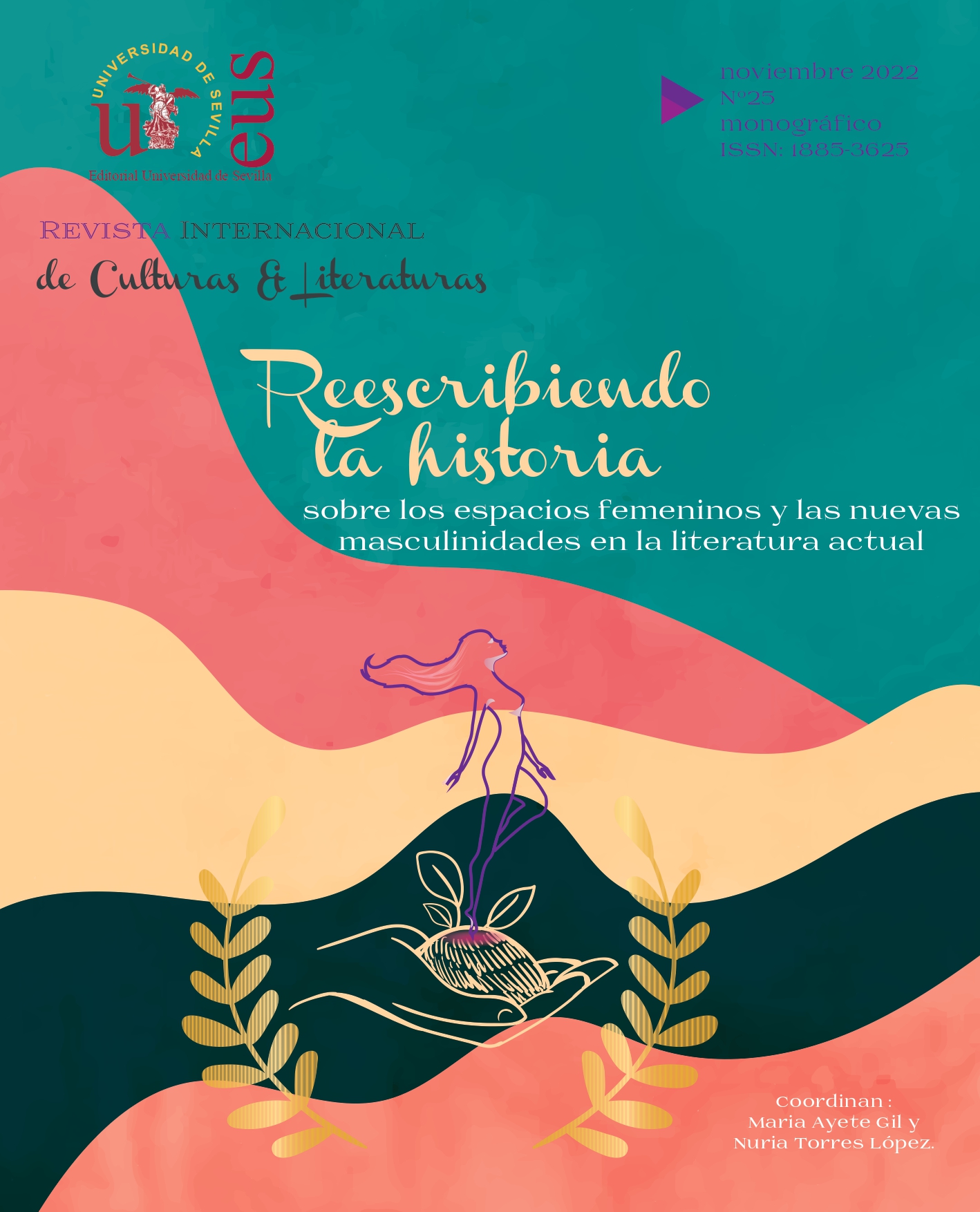“WHAT IS A GOOD WOMAN?” XUE XINRAN 薛欣然 AND THE TRANSFORMATION OF GENDER ROLES ATTACHED TO CONTEMPORARY CHINESE WOMEN WITHIN FAMILY AND SOCIETY
DOI:
https://doi.org/10.12795/RICL2022.i25.22Keywords:
Xinran, Chinese women, nonfiction, oral historyAbstract
The socio-cultural situation of Chinese women is a constantly changing reality. Neither Confucian social values (xiao 孝: filial piety; wulun 五轮: the five fundamental relationships; hexie 和谐: social harmony) nor policy changes which claimed to ‘liberate’ women (marriage laws of 1950; 1980; 2001) can satisfy the growing number of Chinese women who choose the disadvantaged social position of ‘spinster’ (sheng nü 剩女). Contemporary Chinese writer Xue Xinran 薛 欣然 (1958--) explores the evolution of tan lian’ai 谈恋爱 (courtship and romantic relationships) in China in her latest non-fiction work. The Promise (2019) narrates six courting stories from the woman’s point of view, over four generations, within the same 20th-century Chinese family. We analyse the work based on the investigations of Botton Beja (1995; 2017), Fincher (2015), Hershatter (2007), Murti (2019) and To (2013), among others, reaching the conclusion that certain traditional Confucian gender roles attributed to Chinese women (such as san cong si de 三从四德, the ‘Three Obediences and Four Virtues’) maintain their unfavoured position in society.
Downloads
References
Alpern, Sara; Antler, Joyce; Perry, Elizabeth y Scobie, Ingrid (eds.) (1992). The Challenge of Feminist Biography. Urbana y Chicago: University of Illinois Press.
Botton Beja, Flora (1995). La larga marcha hacia la igualdad. Mujer y familia en China. En Taciana Fisac Badell (ed.), Mujeres en China (pp.11-43). Agencia Española de Cooperación Internacional.
_______________. (2017). Tendencias actuales en el matrimonio en China. Estudios de Asia y África, 52-3(164), 535-566. https://doi.org/10.24201/eaa.v52i3.2301
Chakanetsa, Kim & Kananda, Criselda; Xinran Xue (3 de agosto de 2015). Agony Aunts: Criselda Kananda and Xinran Xue / Entrevista de Kim Chakanetsa. BBC World, The Conversation. Podcast. Audio MP3, 26:30, Recuperado: 6 de diciembre 2021. https://www.bbc.co.uk/sounds/play/p02y4hdq
Cheney, Theodore (2001). Writing creative nonfiction: fiction techniques for crafting great nonfiction. Berkeley/Toronto: Ten Speed Press.
Donnell, Alison y Polkey, Pauline (eds). (2000). Introduction. En Donnell, A. y Polkey, P. (eds), Representing lives: women and auto/biography. London: Macmillan Press.
Encyclopaedia Britannica (s.f.). History of China. Recuperado el 1 de abril de 2022. https://www.britannica.com/place/China/History
Faure, Guy Olivier y Fang, Tony (2008). Changing Chinese values: keeping up with paradoxes. International Business Review,17, 194-207. DOI: https://doi.org/10.1016/j.ibusrev.2008.02.011
Fincher, Leta Hong (2014). Leftover Women: The Resurgence of Gender Inequality in China. Zed Books.
Fisac Badell, Tatiana (1997). El otro sexo del dragón. Mujeres, literatura y sociedad en China. Narcea.
Guest, Katy (13 de julio de 2007). Xinran: I want to tell the world about the lives of ordinary Chinese women. Recuperado el 1 de abril de 2022, de The Independent: http://www.independent.co.uk/arts-entertainment/books/features/xinran-i-want-to-tell-the-world-about-the-lives-of-ordinary-chinese-women-456979.html
Gutkind, Lee (2012). You Can't Make This Stuff Up: The Complete Guide to Writing Creative Nonfiction–from Memoir to Literary Journalism and Everything in Between. Philadelphia: Da Capo Press.
___________. (invierno 2022). I'd Like to Thank the Academy. How a rebellious genre gained credibility from an unlikely source. (Nota de editor). Creative Nonfiction, 76/Exploring an Expanding Genre. Recuperado el 14 de mayo de 2022, de https://creativenonfiction.org/writing/id-like-to-thank-the-academy/
Haraway, Donna (1991). Simians, Cyborgs, and Women: The Reinvention of Nature. New York: Routledge.
Hershatter, Gail (2007). Women in China's Long Twentieth Century. University of California Press.
Holmes, Richard (2011). Sidetracks: Explorations of a Romantic Biographer. HarperCollins E-Books. ISBN: 9780007380312. (Obra original publicada 2000).
Lai, Amy (2006). Self and Other: Narrativity in Xinran's The Good Women of China and Sky Burial. Connotations, 16.1-3, 194-218.
Lambert, Angela (13 de julio de 2002). The good woman of Henan. The Guardian. https://www.theguardian.com/books/2002/jul/13/featuresreviews.guardianreview8
Marr, Andrew & Lovell, Julia; Sterckx, Roel; Tse, David; Xue Xinran (18 de marzo de 2019). “Understanding China” / Entrevista de Andrew Marr. BBC Radio 4. Start the Week. Podcast, audio MP3, 42:43. https://www.bbc.co.uk/programmes/m0003ctk
Murti, Desideria (2019). “Single, Seventies, and Stuck”: A Discourse Analysis of the “Leftover Women” or Sheng Nu in China in the Blogosphere. Jurnal Komunikasi: Malaysian Journal of Communication, 35, 41-56. DOI: 10.17576/JKMJC-2019-3501-04
Pan, Lynn (1987). The new Chinese revolution. H. Hamilton.
Real Academia Española. (s.f.). Biografía. En Diccionario de la lengua española. Recuperado el 10 de junio de 2022, de https://dle.rae.es/biograf%C3%ADa
Sánchez, Carlos (07 de agosto de 2019). Citas textuales de materiales sin paginación. Normas APA (7ma edición). https://normas-apa.org/citas/citas-textuales-de-materiales-sin-paginacion/
_____________. (28 de enero de 2020). Citar Comunicación Personal – Referencia Bibliográfica. Normas APA (7ma edición). https://normas-apa.org/referencias/citar-comunicacion-personal/
Showalter, Elaine (1985). “Feminist Criticism in the Wilderness”. En Elaine Showalter (ed.), The New Feminist Criticism: Essays on Women, Literature and Theory (pp. 243-270). Pantheon.
Stanley, Liz (1993). On Auto/Biography in Sociology. Sociology, 27(1), 41–52. https://doi.org/10.1177/003803859302700105
Starkey, David y Bishop, Wendy (2006). Creative Nonfiction. En Keywords in Creative Writing (pp. 62-70). Logan: Utah State University Press.
The Economist (16 de diciembre de 2015). Whatever should I do? To understand how societies evolve, read the problem pages. The Economist. https://www.economist.com/christmas-specials/2015/12/16/whatever-should-i-do
The Guardian (24 de abril de 2011). Xinran: Once upon a life. The Guardian. https://www.theguardian.com/lifeandstyle/2011/apr/24/xinran-childhood-motherhood
To, Sandy (2013). Understanding Sheng Nu (“Leftover Women”): The Phenomenon of Late Marriage Among Chinese Professional Women. Symbolic Interaction, 36(1), 1-20.
Xinran (2002). The Good Women of China: Hidden Voices(Trad. Esther Tyldesley). Vintage Books.
______. (30 de junio de 2004). “Lost Love In Tibet” / Entrevistada por Anna Umbima. BBC World. Everywoman. Podcast, audio MP3, 22:28. https://www.bbc.co.uk/sounds/play/p03kc53d
______. (2006). What The Chinese Don’t Eat. Vintage.
______. (2015). Buy Me the Sky: The Remarkable Truth of China's One-Child Generations. (Trads. Esther Tyldesley, David Dobson). Rider.
______. (2019). The Promise: Love and Loss in Modern China (Trad. William Spence) I.B. Tauris.[Edición Kindle].
Zhang, Hongping 张红萍 (2016). Nüxing: Cong chuantong dao xiandai女性:从传统到现代 [Mujeres: De la tradición a la modernidad]. Beijing shidai huawen shuju 北京时代华文书局 [Editorial Beijing Times].
Zhang, Naihua y Xu, Wu (1995). “Discovering the Positive Within the Negative: The Women's Movement in a Changing China”. En Amrita Basu y Elizabeth McGrory (Eds.), The Challenge of Local Feminisms: Women's Movements in Global Perspective(pp. 25-57). Westview Press.
Zinsser, William (2012). On Writing Well: The Classic Guide to Writing Nonfiction. 30th Anniversary Edition. HarperCollins E-Books. ISBN: 9780062250506. richardcolby.net/writ2000/wp-content/uploads/2017/09/On-Writing-Well-30th-Anniversa-Zinsser-William.pdf. (Obra original publicada 2006).

